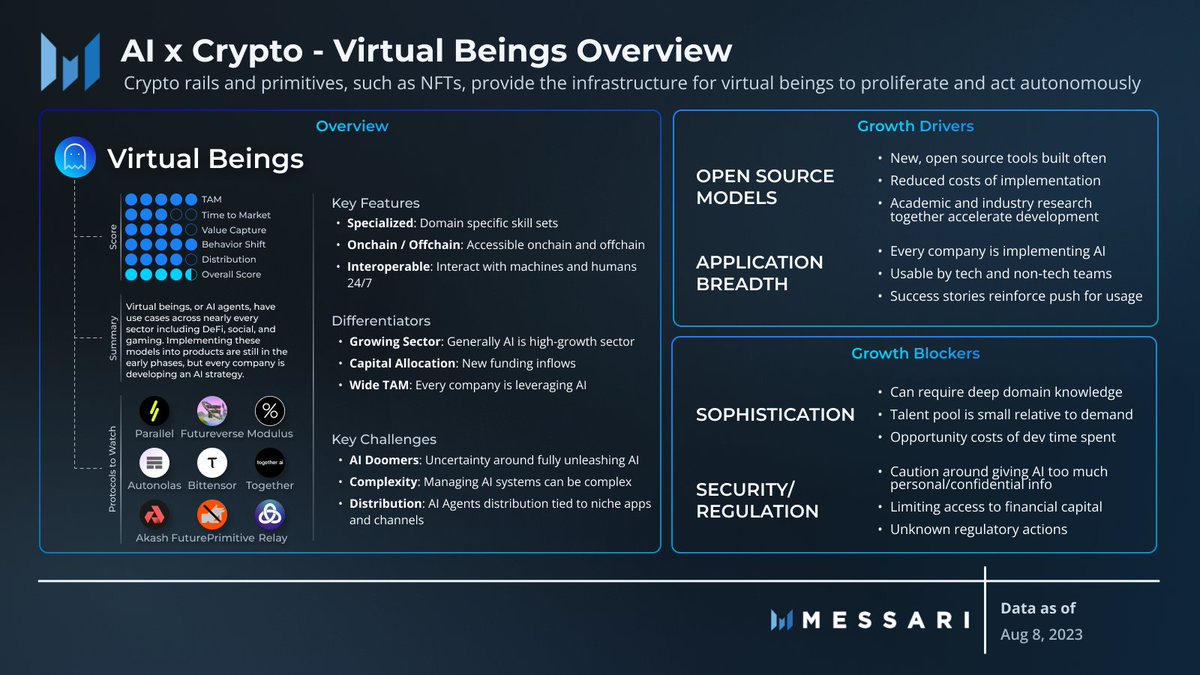1/7 Arweave has historically relied on external apps and ecosystems to deliver data into its network.
AO, a new network built on Arweave, will now create consistent demand for Arweave. AO will serve as both a growth catalyst for Arweave and a new platform for app development.
AO, a new network built on Arweave, will now create consistent demand for Arweave. AO will serve as both a growth catalyst for Arweave and a new platform for app development.

2/7 If you want the full details, skip to the end of the thread and check out the full report where I cover:
-> AO’s Architecture
-> AO’s Flexible Security Model
-> AO’s Impact on Arweave
-> AO’s Viability as an AI Platform
Below are some highlights from the report.
-> AO’s Architecture
-> AO’s Flexible Security Model
-> AO’s Impact on Arweave
-> AO’s Viability as an AI Platform
Below are some highlights from the report.
3/7 One of the biggest tech value props I see with AO is its separation of consensus mechanism from the computation that apps need.
Unbundling these gives AO its modular architecture and allows devs to scale the security and computation underlying their apps.
Unbundling these gives AO its modular architecture and allows devs to scale the security and computation underlying their apps.
4/7 AO apps incentivize compute providers to process state updates and other messages.
This creates a marketplace for apps and compute providers. It ensures apps get the level of required resources, no more/no less. This is vastly different from most smart contract platforms.
This creates a marketplace for apps and compute providers. It ensures apps get the level of required resources, no more/no less. This is vastly different from most smart contract platforms.
5/7 AO is VM-agnostic, which opens the potential for deploying compute-intensive apps (read AI and LLMs).
Teams like @autonomous_af are already working on DeFi automation. Onchain LLMs are an entirely different animal though.
Teams like @autonomous_af are already working on DeFi automation. Onchain LLMs are an entirely different animal though.
6/7 And yes, AO will has its own token.
Today, the AO announced some of the details of the AO token. Check it out.
Today, the AO announced some of the details of the AO token. Check it out.
https://x.com/aoTheComputer/status/1796174735581315481
• • •
Missing some Tweet in this thread? You can try to
force a refresh








